Your donation sets the stage for a new season of Boston's most intimate, entertaining and provocative plays and musicals. Our shows make powerful connections with our audiences-- and they are only possible because of you.
Up & Coming: Arshan Gailus
Up & Coming: Arshan Gailus
Up & Coming: Arshan Gailus

You may not know it, but you’ve probably heard Arshan Gailus’ work in Boston theatres. Sound Design can be an incredibly subtle (and incredibly important) element of an audience’s experience. In his work for SpeakEasy Stage, Company One, Lyric Stage, Actors’ Shakespeare Project, and throughout the Boston area, Arshan has created music, effects, and soundscapes that have a tremendous impact on the emotional weight of a play.
In our special Up & Coming interview, Arshan talks about his process for Sound Design, and what Clybourne Park has in common with a video game.
How did you first get involved in the Boston theatre scene?
The year after I graduated from MIT, I served as the House Sound Engineer at the Calderwood Pavilion for the Huntington Theatre Company for their ’06-’07 season, as well as serving as Sound Supervisor for their 2007 production of Brendan. The contacts I made there led to me getting my first professional sound design gig the following season with Company One.
Did you do theater in high school?
I was involved in my high school theater, primarily as an actor, actually. I also composed music for our submission to the Massachusetts High School Drama Guild Festival my senior year. I suppose that would have been my first experience as a theatrical sound designer.
Most people don’t think of MIT as a place to study music. What was it about their program that attracted you?
I initially went to MIT to study electrical engineering. About halfway through my time there, I realized that while I felt intellectually stimulated by my studies, I didn’t really feel excited about what I would do with that degree once I graduated, so I switched to something I did feel passionate about: music. MIT has some really outstanding music faculty, and, because of the small department size, you’re able to develop a personal rapport with all the professors and lecturers.
How would you describe theatrical Sound Design? It might seem to some people that it is all about choosing songs and making doorbells ring.
That’s a great question, and something I could go on for pages about in and of itself! The most concise description I like is that the Sound Designer is responsible for the entire sonic landscape of the play, which could include music, sounds, live voices, sounds of objects onstage, the sound of the room etc. What this means in practice depends a lot on the particular play, as the goal is always to support the intentions of the piece. Some productions call for a full, realistic soundscape like you might find in a documentary, while others want something more abstract or fantastical. Some of the work is clearly recognizable (such as those songs and doorbells you mention) while some can act on a more subtle or even subliminal level. A great example of some of this subtle sound work in my design for Clybourne Park is the trunk. When the trunk is moved or dropped, a deep, rumbly sound is played in sync with the live sound of the trunk itself. This adds a weight to the sound, which I wanted to help reflect the physical and emotional significance of the trunk. The audience may never realize anything extra is happening, but their experience is altered, even if subliminally.
With all the composition and engineering involved, Sound Design seems like a solitary craft. How do you share your creative process with the rest of the team outside of the studio?
One of the most exciting parts of working in theatre is discussing the general artistic goals of the production with everyone involved (director, actors, other designers, etc.), then figuring out how to translate these ideas into each of our individual disciplines. So while it is true that much of the heavy lifting in sound work is often done alone, the work I am doing is directly inspired by the collective vision for the production. Furthermore, sound and music can create an instinctive reaction in people, even if they can’t describe exactly why or how. So when I share my work with the team as it develops, everyone is generally able to give feedback, regardless of how much training they may or may not have in the specifics of sound or music.
What’s the first thing you do when designing a new show? How do you start?
The first thing I do with a new show is to try to get a sense of the play as a whole. I do this through a combination of my own reading of the script and discussions with the director and design team. Sometimes, these early thoughts and discussions can have very little to do with sound specifically. What I really want to do is get an idea of what it is we want to say about the play, its characters, and the world it creates. All the specifics, then, spring forth from these initial concept discussions.
What kind of influence does the performance venue have on your design?
No matter how lofty the concepts are, eventually, they need to be distilled into something we can actually implement, so of course the venue can have a huge impact on the design. Some obvious ways this can happen are in terms of what resources I have for the sound system, the acoustics of the space, and the audience layout. In general, I am trying to create a particular environment through sound: Does the space want to sound big? Small? Do we want to feel like we are a part of the action, or that we are watching something happen from the outside? Do we want to feel like it is all in our heads? How these effects are created is largely dependent on the space I have to work with.
You do a lot of composing and design in other media, including video games. Do you find that work informs your theatrical work at all?
I would actually say that all of my work informs all of the other work. While there are some obvious technical and structural differences between, say, live theatre and a video game, the overall goal on my end is very similar: to support the story, themes, and moods through sound and music. Almost all of the techniques and approaches I develop for one medium can be in some way translated to another.
Your work last season on SpeakEasy’s production of The Divine Sister has been licensed for use by other companies producing the show. How did that come about?
The first re-licensing came about through Jeffery Roberson (aka Varla Jean Merman) who played Mother Superior in the show. He appeared in another production of The Divine Sister, and arranged for my work to be licensed for that production. The other cases were once via a connection through Jeffery, and the other through Larry Coen, the director of the SpeakEasy production.
What do you think it is about your work on that show that has attracted such interest?
Well, first off, I very much enjoyed creating the music and sound for the show, and I’m thrilled that others connected to my work as well! If I had to say what might have attracted people’s attention, I think it has to do with the commitment we made to a strong overall design choice. Early on, Larry Coen felt it was important to support an epic, over-the-top, Hollywood feel to the show, but more as a loving tribute to the style and all its quirks, as opposed to parody. In all the music I wrote for the show, I tried to keep this idea at heart, relishing in the melodrama, but still staying true to the emotions of each moment. I think this approach to the show really resonates with the characters and the story in a very natural way.
What were the specific challenges of Sound Design for Clybourne Park?
Some shows call for overtly dramatic sound (such as The Divine Sister) whereas others want a more restrained, subtle approach. Clybourne Park was definitely one of the latter. The challenges of a show like this often center around decisions of when to use sound and when not to, and just how present or subtle sound wants to be in each moment. I want to make sure that each sound choice is specific and present enough to have the intended effect, but not so present that it overwhelms the senses and distracts from the audience’s focus and investment in the world of the show. It’s a game of constant tweaks and reassessment to hit just the right balance.
Talk a bit about the pre-show and intermission music. What were you hoping to achieve with your work on those portions of the show?
Both the pre-show and intermission music choices were intended to give a sense of time and place, but with different goals. I wanted the pre-show music to firmly place us in the 1950s, while also building on the cultural stereotype of an idyllic, happy, little ‘50s suburb, as a starting point and something to grapple with and push against through the first act.
The intermission music is intended to track the neighborhood through the 50 years between acts. I tried to be sensitive not only to the time period of each piece of music, but also to the demographics they reflect and the societal states and issues they address. And, of course, I wanted to make sure that the pieces were selected to create a smooth and enjoyable musical progression.
Besides the music, what are the differences for the Sound Design between the two acts inClybourne Park? How does 1959 sound different from 2009?
One of the concepts the artistic and design team kept coming back to was the idea that while many things have changed over those 50 years, many of the fundamentals have stayed the same. To this end, instead of trying to draw a huge contrast, I tried to show how the same kinds of things are filtered through time. So in both cases, for example, there are kids playing, dogs barking, and some cars driving by, but the choices become: What are the kids doing? What kind of dog is it? How do the cars sound different?
What’s next for you?
I’m currently in the early stages of working on Pericles with Actors’ Shakespeare Project, and am working on a few different video game and film projects.
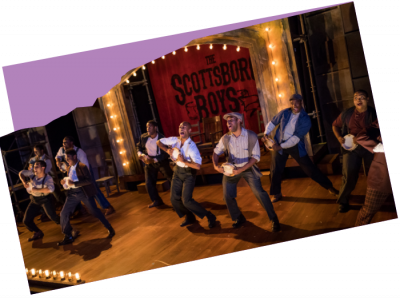 Past Productions
Past Productions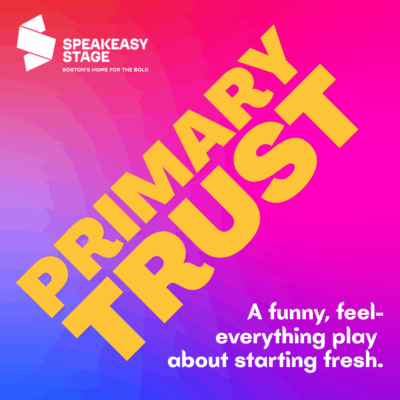 Primary Trust
Primary Trust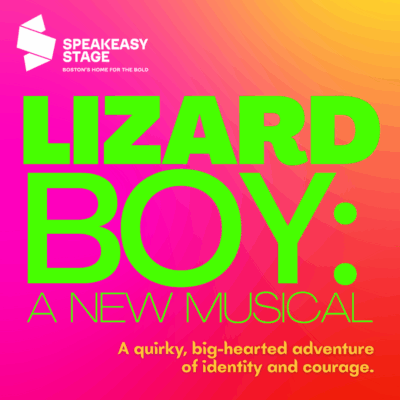 Lizard Boy: A NEW MUSICAL
Lizard Boy: A NEW MUSICAL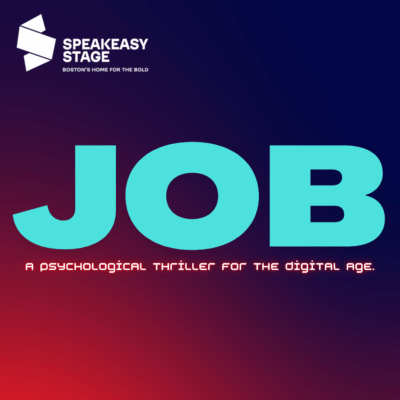 JOB
JOB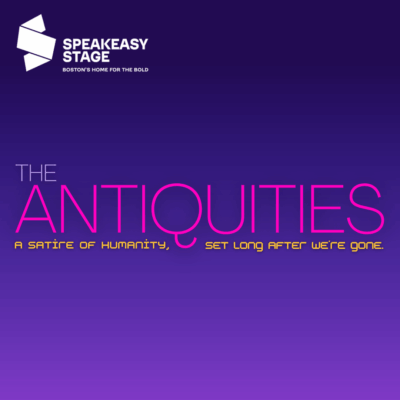 The Antiquities
The Antiquities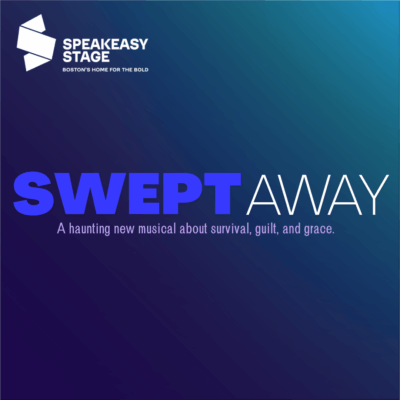 Swept Away
Swept Away




